
Article Summary: Redwood National Park Facts
Redwood National Park Facts! In this article, we provide you with 12 amazing facts about one of America’s most magnificent national parks.
More Than Just Parks is your one-stop-shop when it comes to learning everything you’ll need to know about America’s national parks. We’ve got expert guides, beautiful photos, helpful tips, breathtaking films and so much more.
I’ve been to so many of these amazing places since retiring from teaching in 2018. Did I mention that I taught history? I spent a lifetime teaching about the history behind some of these natural wonders. Then I got to see them firsthand. And now I’m sharing some of the incredible stories about these beautiful places with you. It doesn’t get any better than that!
More Than Just Parks takes a deeper dive with its national park facts. We’ve done our homework so that you’ll get more than you bargained for.
Without further ado, let’s dive in.
Table Of Contents: Redwood National Park Facts
Redwood National Park Facts
- Facts About Redwood National Park
- Redwood National Park Facts
- Top 5 Redwood National Park Facts
- 1. Indigenous Peoples Were The Earliest Inhabitants Of Redwood National Park
- 2. A Cockroach May Have Been Responsible For The First Foreigner Seeing The Magnificent Redwoods
- 3. Spanish Explorers Are The First Documented Foreigners To Visit The California Redwoods
- 4. An American Frontiersman Was The First To Explore The Interior Portions Of Northern California
- 5. Redwoods Possess Some Amazing Characteristics
- Top 10 Redwood National Park Facts
- 6. California Experienced A “Logging Boom” As Redwood Became The Wood Of Choice
- 7. A League Was Established To Save The Redwoods
- 8. The Tallest Redwood Tree Is Six Stories Taller Than The Statue Of Liberty
- 9. Approximately 280 Birds Have Been Recorded Within The Boundaries Of Redwood & The Redwood State Parks
- 10. From Redwood You Can See Some Of The Largest Mammals On The California Coast
- Top 12 Redwood National Park Facts
- Check Out Our Amazing Redwood National Park Film – It’s Less Than 4 Minutes
- Meet The Parks Brothers
- Map Of Redwood National Park
- List Of Redwood National Park Facts
- We Hope You’ll Follow Our Journey
- Top 5 Redwood National Park Facts
Facts About Redwood National Park
Redwood National and State Parks is a complex of protected areas located in northern California, near the Oregon border. The parks are known for their towering redwood trees, which are some of the tallest and oldest trees on Earth. The parks are home to a number of different redwood species, including the coast redwood, which can grow up to 379 feet tall.
In addition to the redwoods, the parks are also home to a wide variety of plant and animal life. The parks are located in a temperate rainforest, which supports a diverse ecosystem. The parks are home to many species of birds, mammals, and reptiles, as well as a variety of plant life.
Redwood National and State Parks is a popular destination for outdoor recreation, including hiking, camping, and fishing. The parks also have a number of developed facilities, including campgrounds and visitor centers.
They’re also home to a number of research and educational programs, and offer a variety of educational opportunities for visitors of all ages.
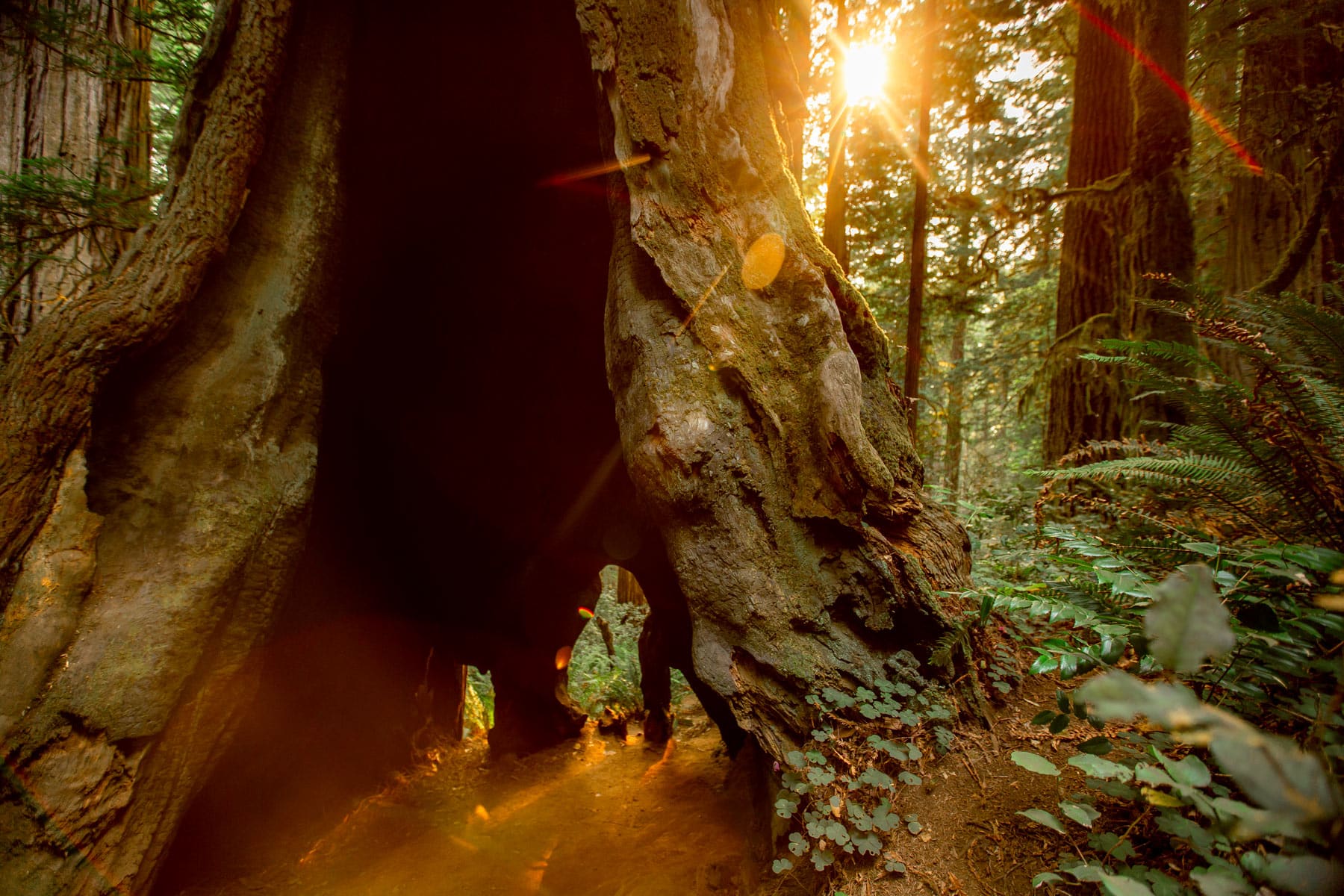
Here Are Some Of The Basic Facts
- Location: California
- Acreage: It covers an area of 172 square miles (445 square km)—of which more than one-third is old-growth forest—and includes land held in three state parks: Jedediah Smith Redwoods, Del Norte Coast Redwoods, and Prairie Creek Redwoods.
- Visitation: Redwood National Park had 504,722 in 2019.
- Elevation: Elevations range from sea level to just over 3,000 feet.
- Climate: Coastal daytime temperatures range from the 50s in winter to the 60s in summer with occasional days in the 70s, although a greater range is found over inland areas.
- When Did It Become A National Park? After much controversy and compromise with timber companies, Congress finally approved a federal park, and on October 2, 1968, President Lyndon B. Johnson signed into law the act that established Redwood National Park.

Redwood National Park Facts
Top 5 Redwood National Park Facts
1. Indigenous Peoples Were The Earliest Inhabitants Of Redwood National Park
Long before it became a national park, the earliest inhabitants of the “Land of the Redwoods” were the Native Americans who considered coastal California to be their home.
Among the fascinating Redwood National Park Facts is that assorted groups of indigenous people of the North Coast region have made the redwood forests and associated ecosystems their home since time immemorial.
The area that is now Pinnacles National Park was traditionally home to many Native American tribes, none of which dominated the region. Instead, there were scores of villages that dotted the coast and lined the major rivers.
Each of these villages was politically independent but connected to one another through complex networks of economic, social, and religious ties.
The concept of “tribe” does not accurately describe the traditional political complexity of the region.
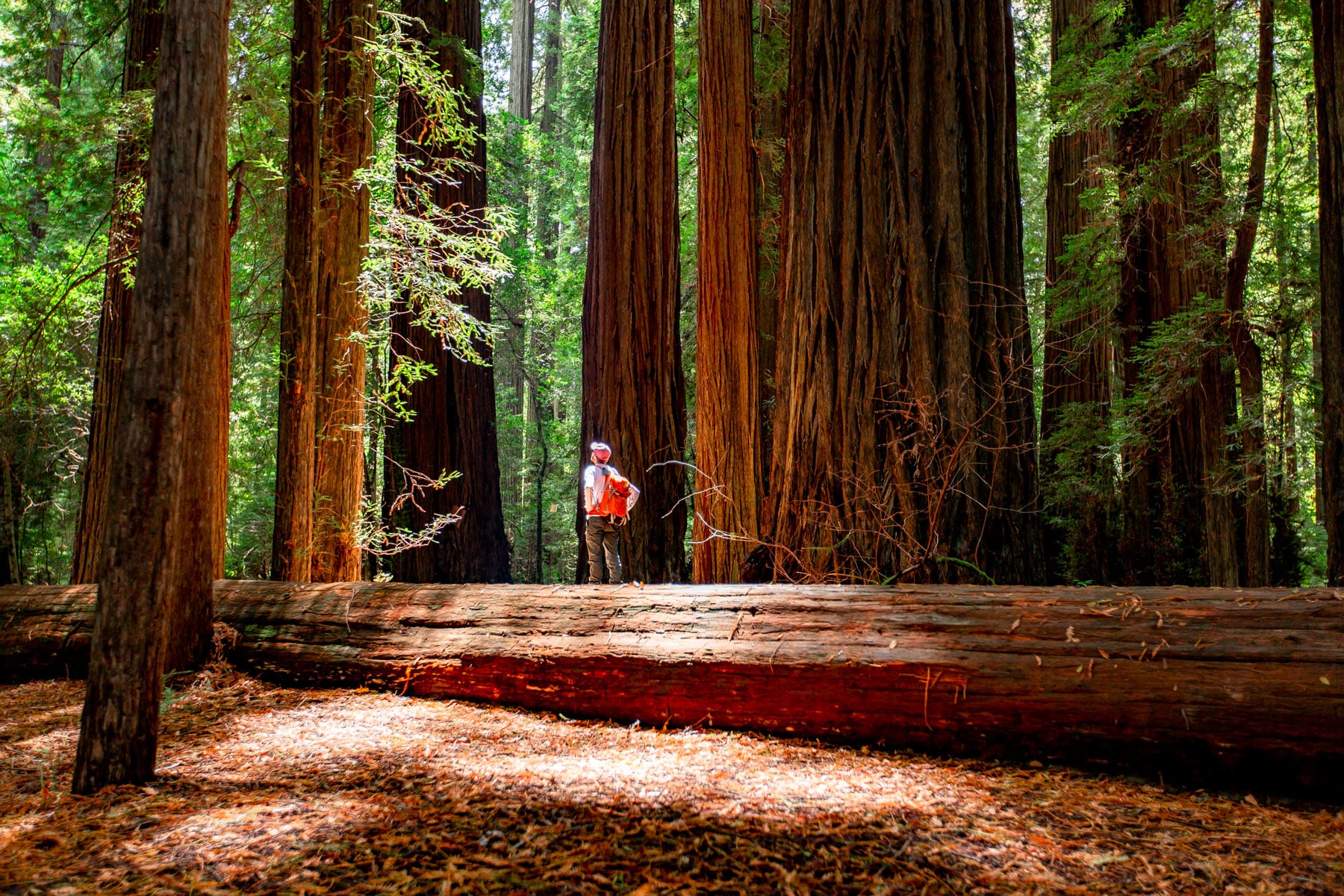
Guardians Of Their Sacred Places
While they may have admired the magnificent trees of California’s Redwood Forests, the early coastal tribes used the trees to build stools, storage boxes as well as fishing tools and traps.
They also used the redwood bark or root fibers in basket-making and the decoration of women’s skirts.
Even more important to their survival, however, was the use of the trees to make redwood canoes.
The Yurok, Tolowa and Wiyot tribes were active up and down the rivers which provided sustenance to their peoples.
As a matter of fact, Native Americans considered redwood trees to be living beings who served as “guardians” of their sacred places.
CHECK OUT: 7 National Parks Near Los Angeles You’ll Love
2. A Cockroach May Have Been Responsible For The First Foreigner Seeing The Magnificent Redwoods
Now this has got to be the strangest of all the Redwood National Park Facts. It’s a story that involves a Chinese sailor by the name of Hee-li. And a cockroach!
According to the story, two thousand years before the arrival of the Spanish, this sailor inadvertently sailed east when he thought he was sailing west. The reason for this, according to this amazing tale, is that a cockroach got lodged under the needle of the compass which Hee used for navigating.
The mistake was not discovered until one of his men decided to clean the compass, but by then they had already reached shore and explored this amazing new land and marveled at its gigantic red trees.
This incredible story, which has yet to be independently verified, comes to us because Hee-li wrote of his adventures.
His amazing account was uncovered by an American missionary in 1890 who translated it and then shared it with the world.

CHECK OUT: 6 AMAZING National Parks Near San Diego You’ll Love
3. Spanish Explorers Are The First Documented Foreigners To Visit The California Redwoods
As a retired history teacher and lifelong history buff, I have always been fascinated by the stories of explorers who boldly went where no one had gone before. One of my favorite Redwood National Park Facts concerns the first explorers whom we can actually verify having seen the redwood forests. And there were no bugs involved!
According to historians, the first recorded sighting of the coast redwoods by Europeans was written by Father Juan Crespi, who accompanied Gaspar de Portola on his explorations from San Diego to Monterey Bay in 1769.
On October 10, Crespi wrote: “In this region, there is great abundance of these trees and because none of the expedition recognizes them, they are named red wood (palo colorado) from their color.”
As for Gaspar de Portolá, (born c. 1723, Balaguer, Spain—died c. 1784, Mexico or Spain), he was a Spanish military officer who served as the first governor of Upper California, and founder of Monterey and San Diego.
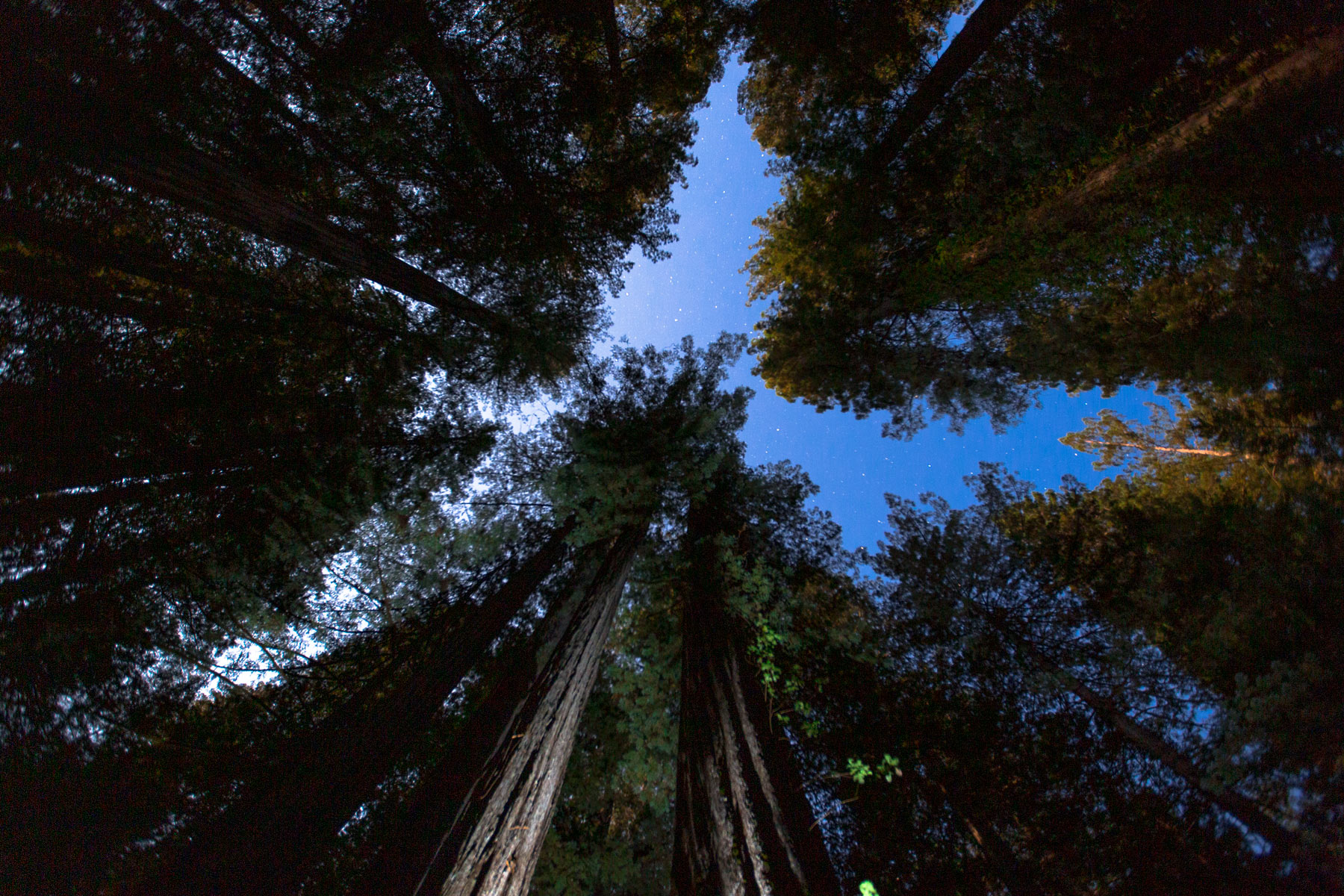
The First Spaniards To Enter The Area That Is Redwood National Park
The first Spaniards to actually enter the area that is today Redwood National Park were the explorers Don Bruno de Heceta and Juan Francisco de la Bodega y Cuadra. They arrived in 1775.
In the same year, Captain Juan Bautista de Ayala made a large dugout redwood canoe in the Carmel River area. This was one of the first three Spanish boats to enter San Francisco Bay.
The Spanish would build a chain of missions up and down the coast of California. Redwood was used in the construction of many of these missions.
CHECK OUT: 8 BEST National Parks Near San Francisco To Visit
4. An American Frontiersman Was The First To Explore The Interior Portions Of Northern California
In doing my research for this article, I came across the story of the one of the most amazing men to have ever graced the pages of history.
He was an American clerk, transcontinental pioneer, frontiersman, hunter, trapper, author, cartographer, mountain man and explorer of the Rocky Mountains, the Western United States and the Southwest during the early 19th century. Now how’s that for a resume?
Jedediah Strong Smith was one of the premier frontiersmen of his day.
In his short life he became the first white man to traverse Utah, Nevada, and parts of California.
He also helped find a new route over the continental divide to the western side of the Rocky Mountains through South Pass in Wyoming.
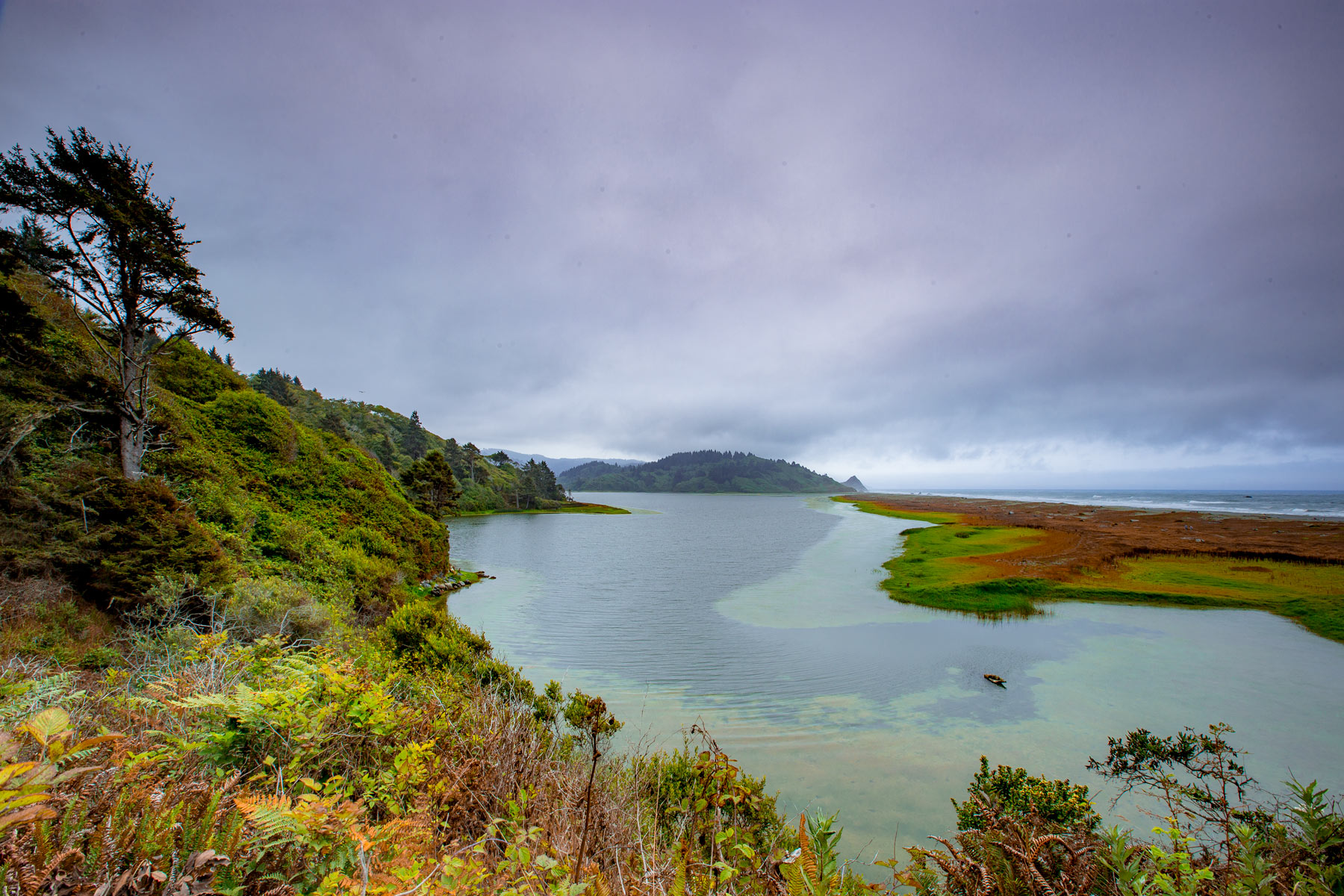
The Noblest Trees
Smith and his party traversed the redwood forests of California. He described the redwoods as “the noblest trees” he had ever seen.
Smith’s wish was to be “the first to view a country on which the eyes of a white man had never gazed and to follow the course of rivers that run through a new land.”
His reports on the geology and geography of the western territories appeared in newspapers of the day, and proved that the Sierra Nevada could be safely crossed to reach California.
In a remarkably few years, his travels, observations, and notes filled in many blank spaces on the country’s map. (Source: California Department Of Parks & Recreation)
Jedediah Smith Redwoods State Park
In recognition of his achievements, Jedediah Smith Redwoods State Park is the last in a long string of redwood parks that stretch up Northern California’s coast.
A few miles inland from the ocean, the park is densely forested with huge ancient trees. In fact, it contains seven percent of all the old-growth redwoods left in the world.
Save The Redwoods League
The park was named for Jedediah Strong Smith and it was established in 1929 with a small parcel donated to Save the Redwoods League by the family of lumberman Frank Stout.
Believe it or not, Jedediah Smith Redwoods State Park has more old growth trees per acre than any other park.
It’s also considered to be the most unspoiled of California’s redwood parks which you might want to know just in case you’re considering visiting it.
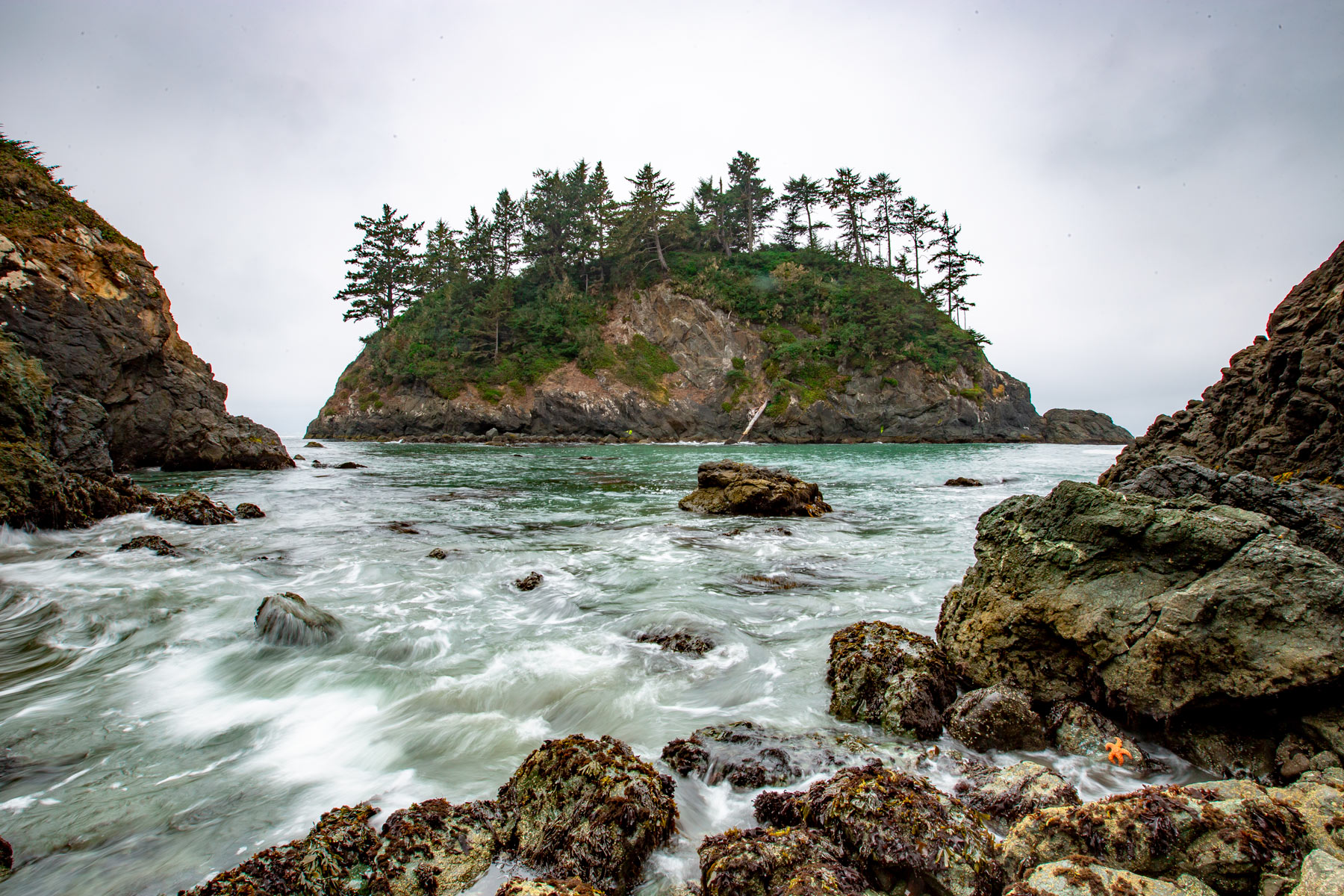
CHECK OUT: 15 MUST-SEE Historic Sites In California
5. Redwoods Possess Some Amazing Characteristics
No list of Redwood National Park Facts would be complete without exploring the amazing characteristics of these majestic trees.
Did you know that a redwood cone is about the size of an olive? It contains anywhere from 60 to 120 seeds. It would actually take more than 100,000 of these seeds to weigh one pound.
One redwood tree can drop up to 10 million of these seeds. That having been said, did you know that only a few will mature?
If one happens to land in the right place, however, it may grow to become giant which lives for more than 2,000 years.
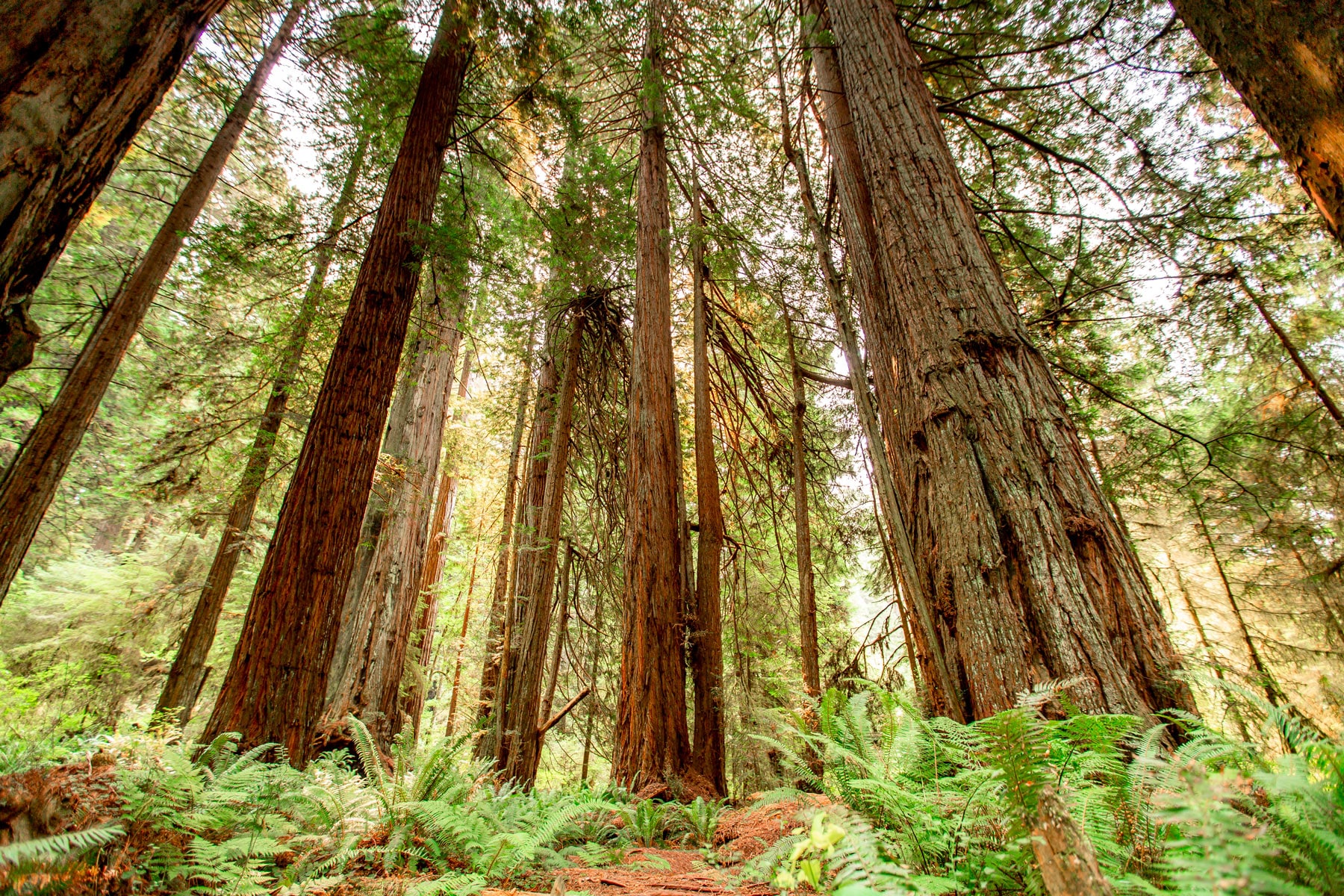
California Counties Are Home To 88% Of The Surviving Coastal Redwoods
Did you know that, tough redwoods once covered over two million acres?
Today four of California’s northern counties – Del Norte, Humboldt, Mendocino and Sonoma – are home to 88% of the surviving coastal redwoods?
Now here’s my favorite. Did you know that redwoods create their own rain? That’s right! These giants are able to draw in moisture from the fog around them through their uppermost needles.
Each tree’s circulatory system transports an estimated four hundred gallons of water a day up its massive trunk from its shallow but extensive root system.
In short, redwoods create their own rain by trapping fog on their leaves which is then condensed into water droplets.
In fact, a large redwood tree actually holds about 34,000 pounds of water and it’s estimated that fog provides at least 30% of the total amount of water these trees require.

CHECK OUT: 25 Bucket List Famous Landmarks In America (MUST-SEE)
“The redwoods, once seen, leave a mark or create a vision that stays with you always. No one has ever successfully painted or photographed a redwood tree. The feeling they produce is not transferable. From them comes silence and awe. It’s not only their unbelievable stature, nor the color which seems to shift and vary under your eyes, no, they are not like any trees we know, they are ambassadors from another time.”
-john steinbeck, travels with charley
Top 10 Redwood National Park Facts
6. California Experienced A “Logging Boom” As Redwood Became The Wood Of Choice
There are other amazing characteristics of the redwood trees not discussed in the previous section.
They include the following: it’s a wood which will not rot, is difficult to burn and is of a rich mahogany color.
This made it very valuable for use in building homes, furniture, and other products.
Shortly after the California Gold Rush, there was a “Redwood Logging Boom.”

The Leading Region For Harvesting Redwood
Humboldt County became the leading region for harvesting redwood. Out of an approximate land area of 2,224,000 acres, it was estimated that over 1,000,000 acres were logged.
C.R. Johnson along with the Union Lumber Co. built a large mill on the site of the Army’s abandoned Fort Bragg.
Harry Meiggs, a San Francisco entrepreneur whose Meigg’s Wharf became today’s North Beach in San Francisco, also built a mill at the site of the present-day town of Mendocino. (Source: Sonoma Index Tribune)
Given the superior quality of the redwoods, they represented most of the trees to be cut down.
Unfortunately, more than 95% of the original coastal redwood forests were cut down.

CHECK OUT: 11 AMAZING Facts About Acadia National Park
7. A League Was Established To Save The Redwoods
What impresses me most about the stories behind the establishment of America’s national parks are tales of ordinary men and women who came together to preserve and protect these amazing places.
Another of the fascinating Redwood National Park Facts involves one such story. It’s the story of the “Save The Redwoods” League.
I referenced this important organization in an earlier section, but I wanted to provide more details regarding what they did and why it was so important.
By the 1890s, logging redwood trees in the Pacific Northwest had become a very lucrative business. At the time, most of the redwood forests had become privately owned.
Though some people had previously proposed the idea of preservation, the huge demand for lumber in America made it impossible at the time.
According to the National Park Service, Paleontologists Henry Fairfield Osborn of the American Museum of Natural History, Madison Grant of the New York Zoological Society, and John C. Merriam of the University of California at Berkeley founded Save the Redwoods League in 1918.
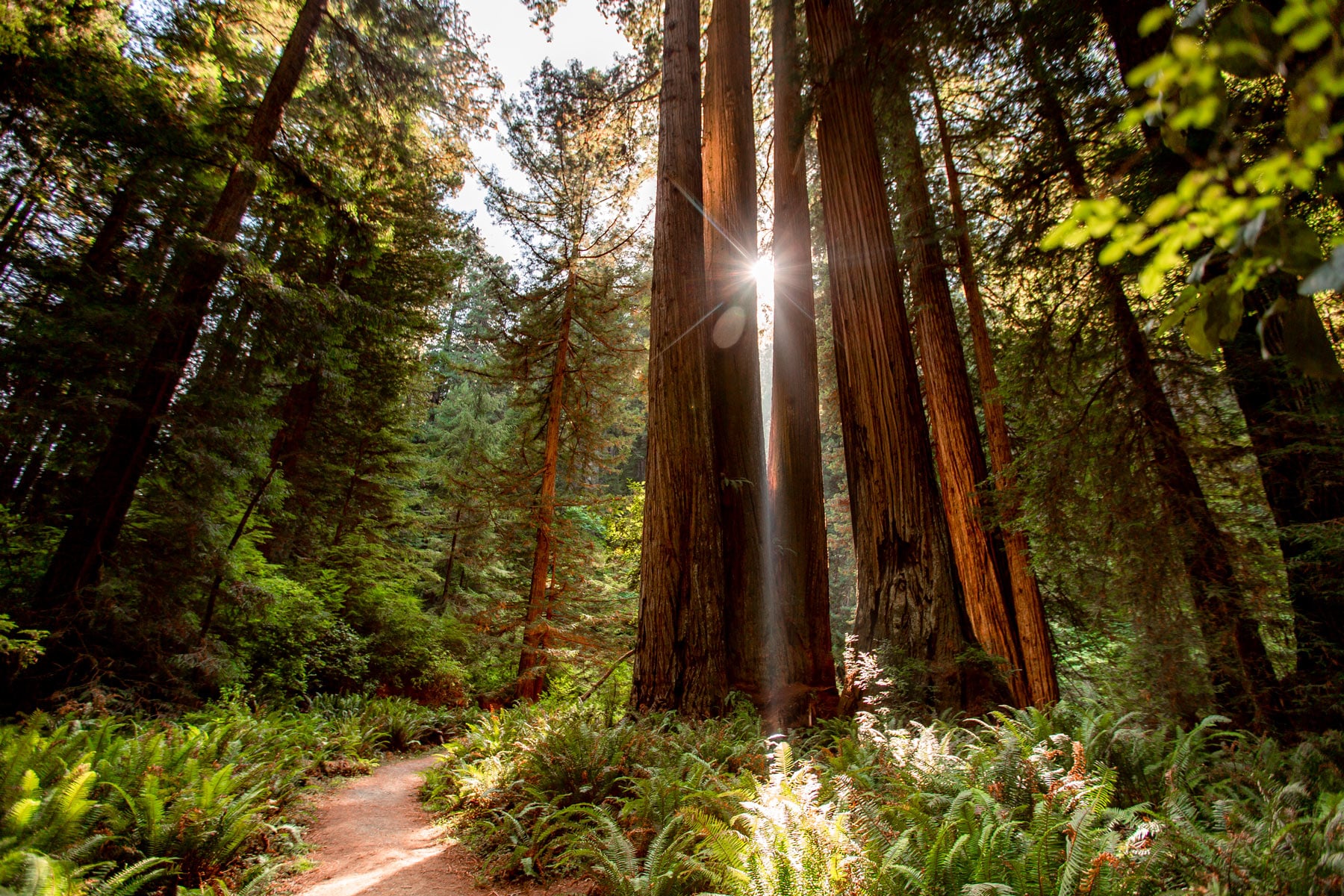
The League Bought Over 100,000 Acres Of Redwood Forest
The Save The Redwoods League is a nonprofit organization that was formed to buy and preserve redwood tracts.
Through donations and matching state funds, they purchased over 100,000 acres of redwood forest between 1920 and 1960. These purchases mostly consisted of North Coast redwood groves.
As a result, California Department of Parks and Recreation created several state parks such as Jedediah Smith Redwoods State Park, Del Norte Coast Redwoods State Park, Prairie Creek Redwoods State Park, and Humboldt Redwoods State Park.
Additionally, the League also started a Memorial Grove Program in 1921, which has established more than 700 memorial and honor groves in California State Parks and Redwood National Park.

CHECK OUT: 10 AMAZING Facts About Badlands National Park
8. The Tallest Redwood Tree Is Six Stories Taller Than The Statue Of Liberty
Just when you thought we couldn’t come up with any more fascinating Redwood National Park Facts we do.
Believe it or not, the tallest redwood tree in existence is actually six stories taller than the Statue of Liberty.
It’s a coast redwood (Sequoia sempervirens) in California that is considered the world’s tallest known living tree, measuring 115.92 m (380.3 feet).
The tree is called Hyperion.
It was discovered on August 25, 2006, by naturalists Chris Atkins and Michael Taylor.
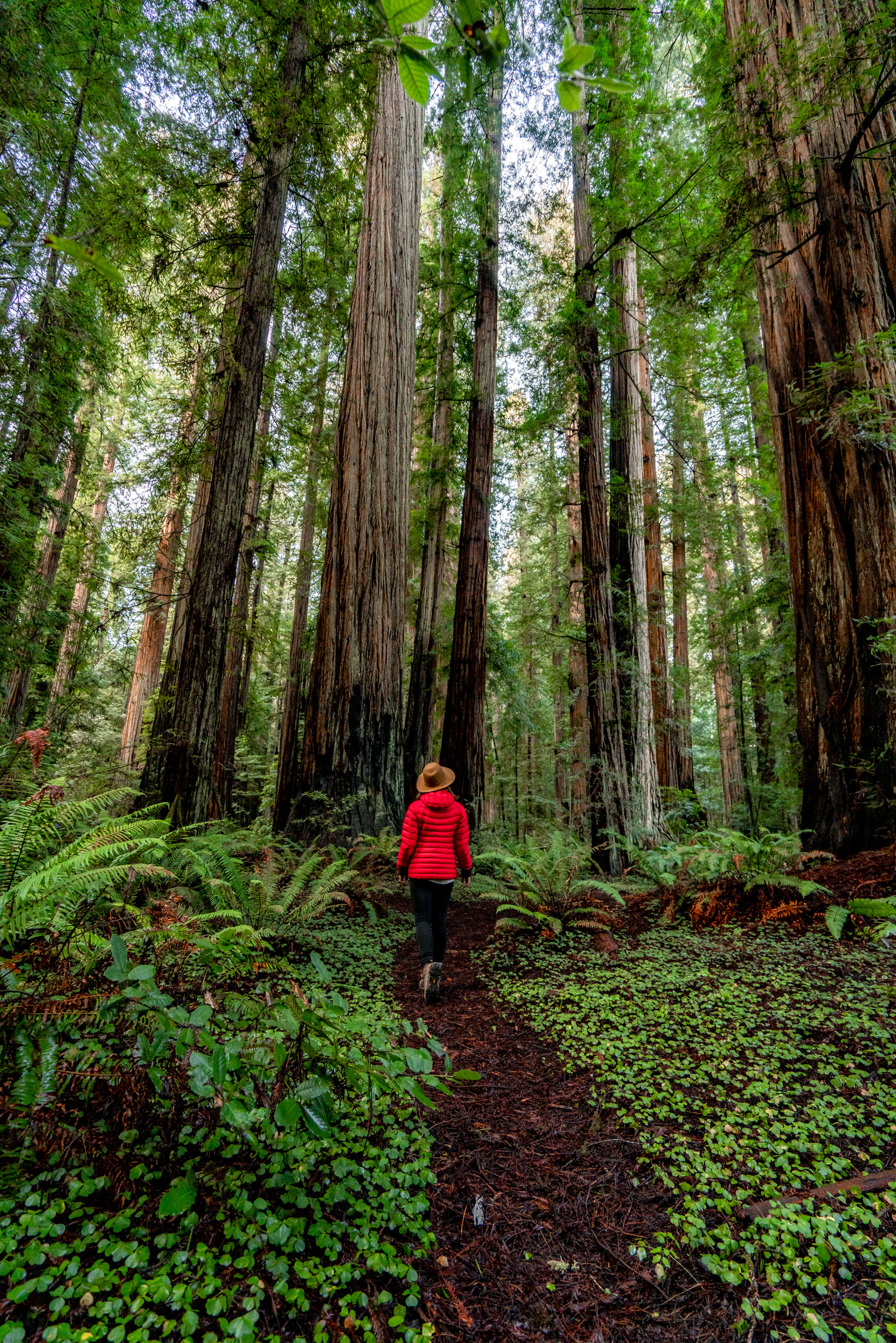
Naturalists Chris K. Atkins and Michael W. Taylor named the tree after the Greek Titan Hyperion, The High One brother of Kronos and Rhea and father of Helios.
While the Hyperion is believed to be the world’s tallest living tree, it isn’t the largest. That title goes to the General Sherman Tree in California’s Giant Forest of Sequoia National Park.
Unfortunately, Hyperion is now off-limits to visitors. Eager tourists who attempt to seek it out anyway could face fines of $5,000 or up to six months in jail.
The new rules are an attempt to curb destructive tourism that has damaged the surrounding forest.
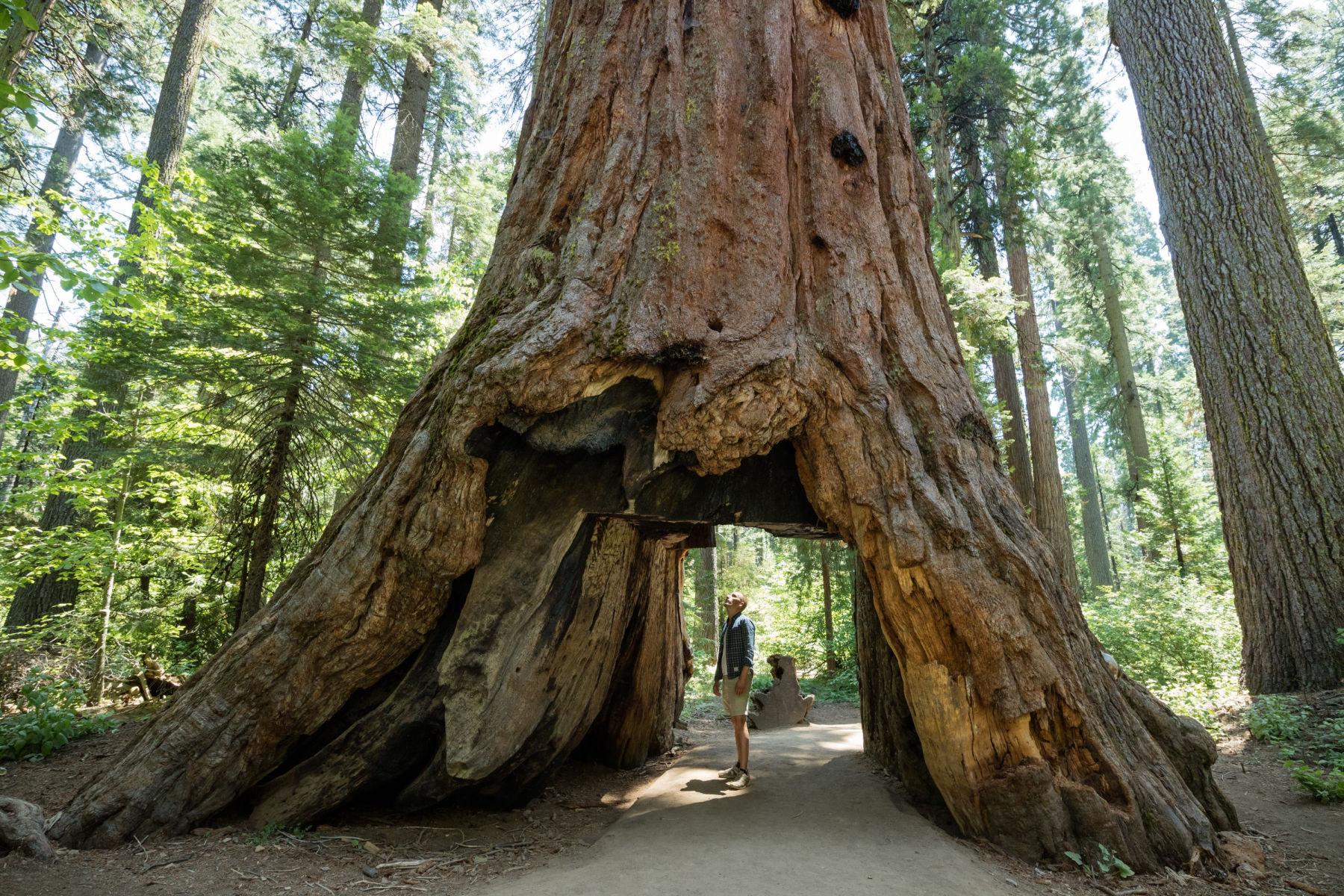
CHECK OUT: 12 AMAZING Facts About Capitol Reef National Park
9. Approximately 280 Birds Have Been Recorded Within The Boundaries Of Redwood & The Redwood State Parks
Another of the fascinating Redwood National Park Facts has to do with its feathered wildlife.
Approximately 280 species of birds have been recorded within the boundaries of Redwood National and Redwood State Parks, which represents about a third of the total number of bird species found in the United States.
This is a significant diversity of bird species in a relatively small area.
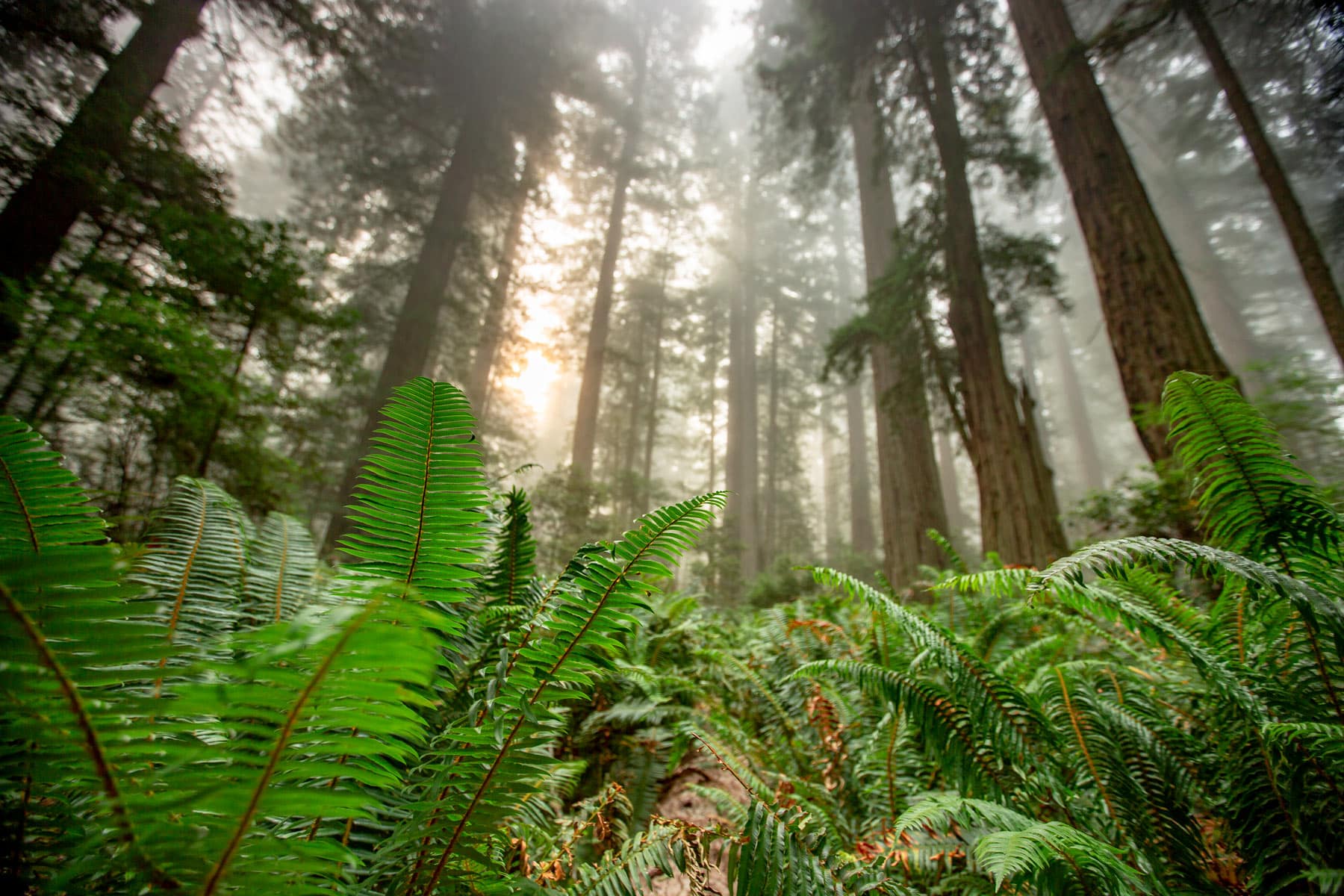
CHECK OUT: 15 (FASCINATING) Death Valley National Park Facts You Probably Didn’t Know
10. From Redwood You Can See Some Of The Largest Mammals On The California Coast
If you enjoy marine life then you’ll enjoy this next Redwood National Park Fact.
At Redwood National and State Parks you’ll have a great chance of seeing some of the largest mammals on the redwood coast.
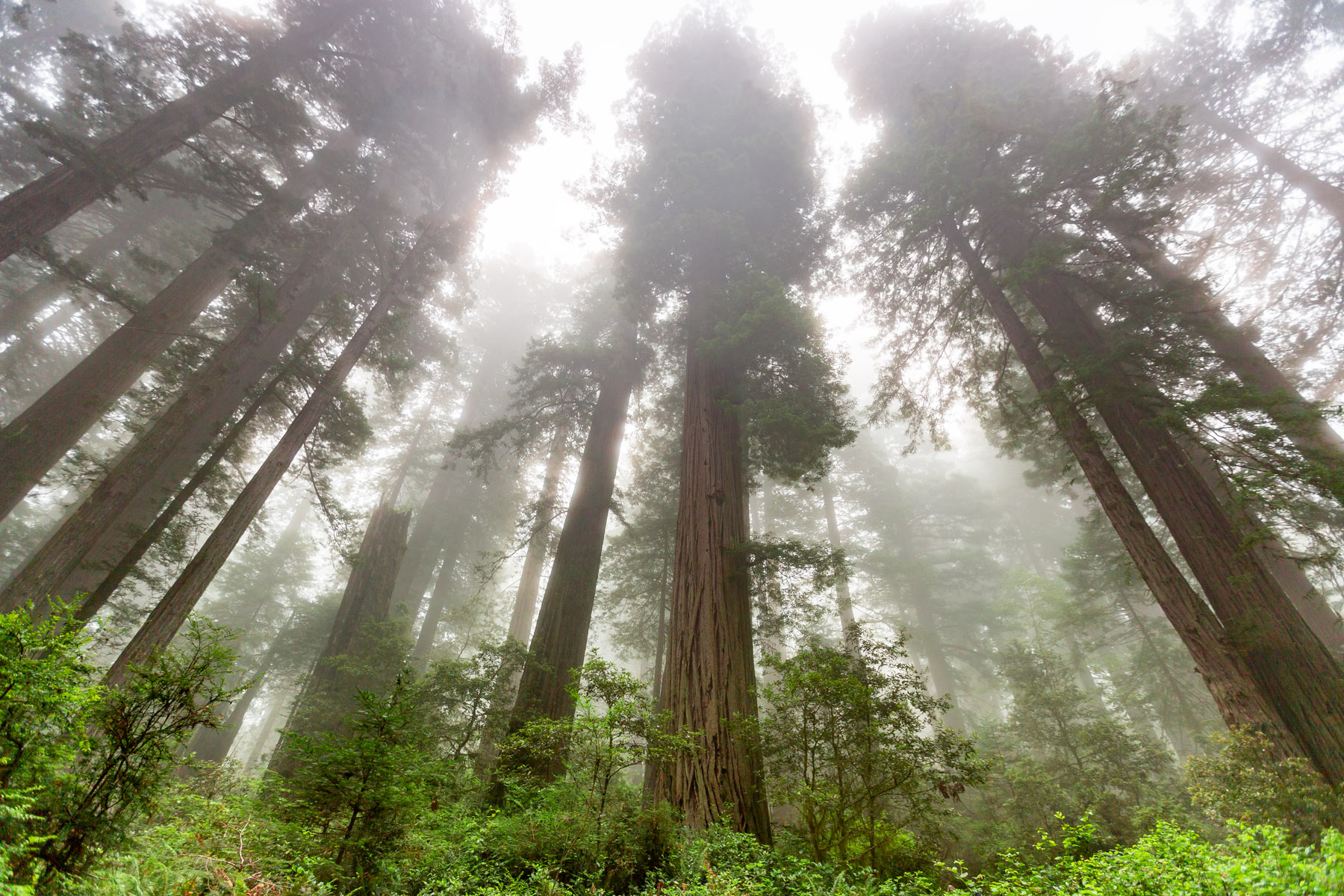
Marine life that you may have the opportunity to view include:
- Harbor Seal: It is possible to see harbor seals hauled out on beaches and offshore rocks throughout the entire year. They are identified by their spotted coats of various shades of white, gray, or brown; lack of external ear flaps; and short front limbs which are not used in locomotion on land.
- California Sea Lion: They appear in summer after the breeding season in southern California, and remain through the winter before returning south to breed. Commonly, the population on the redwood coast consists of adult and subadult males, with females remaining year round near the southern rookeries.
- Northern Elephant Seal: They may occur sporadically in Redwood National and State Parks when they haul out on beaches to undergo their annual molt during summer months. To date only young, immature subadults have been recorded on park beaches.
- Gray Whale: Gray whales migrate along the west coast twice a year, with peak numbers in December when they are moving south to the breeding grounds in Mexico, and May when they are heading north to feeding grounds in the arctic.
- Killer Whale: The killer whale, also known as orca, may be seen at any time of year. The probability of seeing killer whales may increase when Chinook salmon enter the Klamath River in late August and September.
- Harbor Porpoise: At any time of year, on days when the ocean is calm, it is not unusual to see harbor porpoises in small groups of up to 10 individuals immediately beyond the breakers. (Source: NPS)
CHECK OUT: 11 SURPRISING Everglades National Park Facts
Top 12 Redwood National Park Facts
11. One Of The Most Spectacular Places To Visit Is The Lady Bird Johnson Grove
Among my favorite Redwood National Park Facts is one which honors a woman who was arguably the most influential First Lady when it came to conservation.
The Lady Bird Johnson Grove is one of the most spectacular groves of ancient, old-growth Redwoods in the world. This grove is located near the town of Orick at about 1,000ft above sea level and is one of the most popular hikes in the park.
The trail itself is only about 1.3 miles long with little elevation gain making it great for folks of all ages and fitness levels.
Along with the Stout Grove, this is one of the most visited groves of Redwoods in the park.
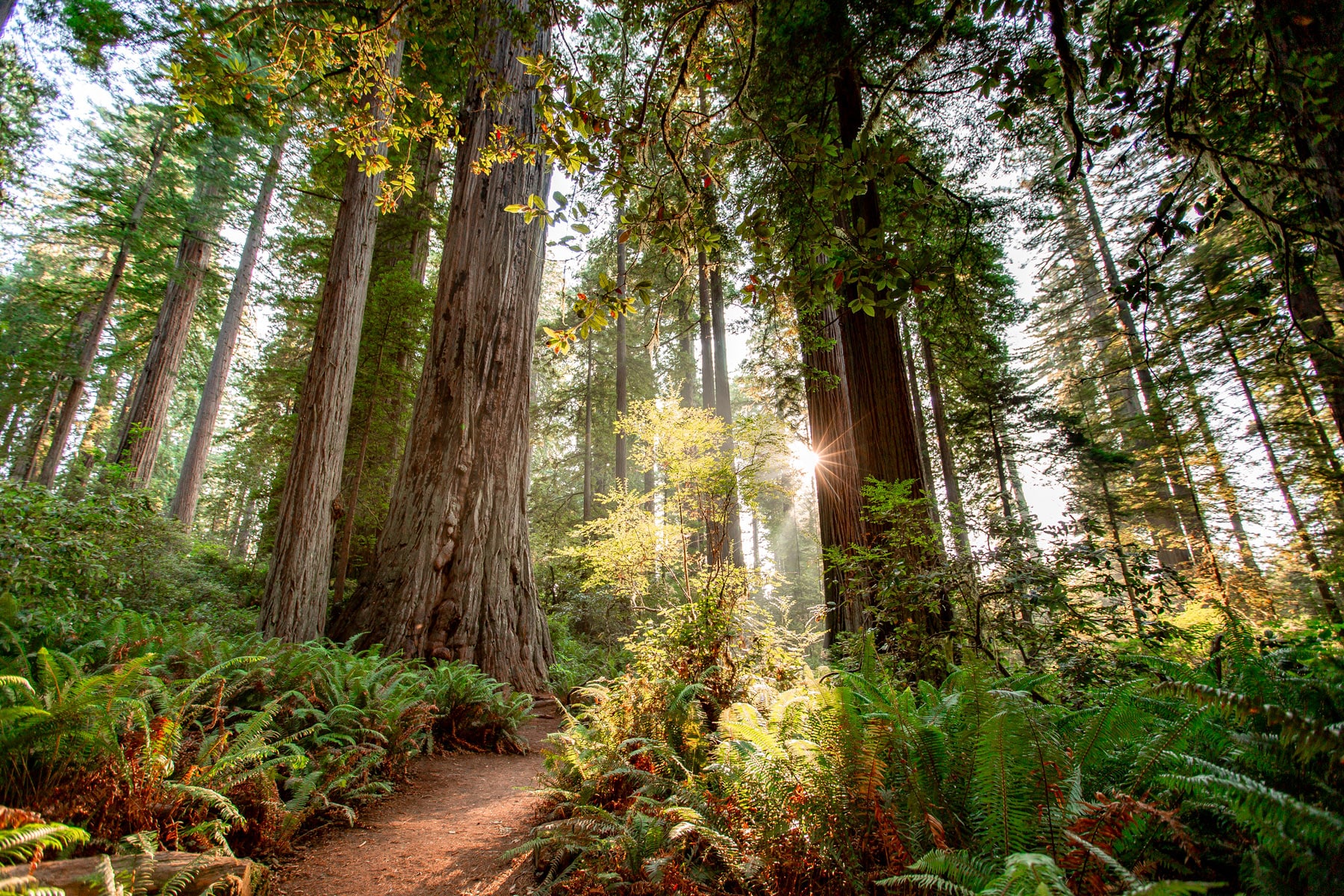
Lady Bird Johnson’s Campaign For Beauty
President Lyndon Johnson’s wife, Lady Bird, became the “Environmental First Lady.” She became a strong voice and a passionate advocate on environmental issues.
As Dee Hoffman writes in Lady Bird Johnson, The Environmental First Lady, “Through her efforts to clean up first the Nation’s Capital and later the nation’s highways and byways, Lady Bird legitimized environmental issues and made them a national priority.”
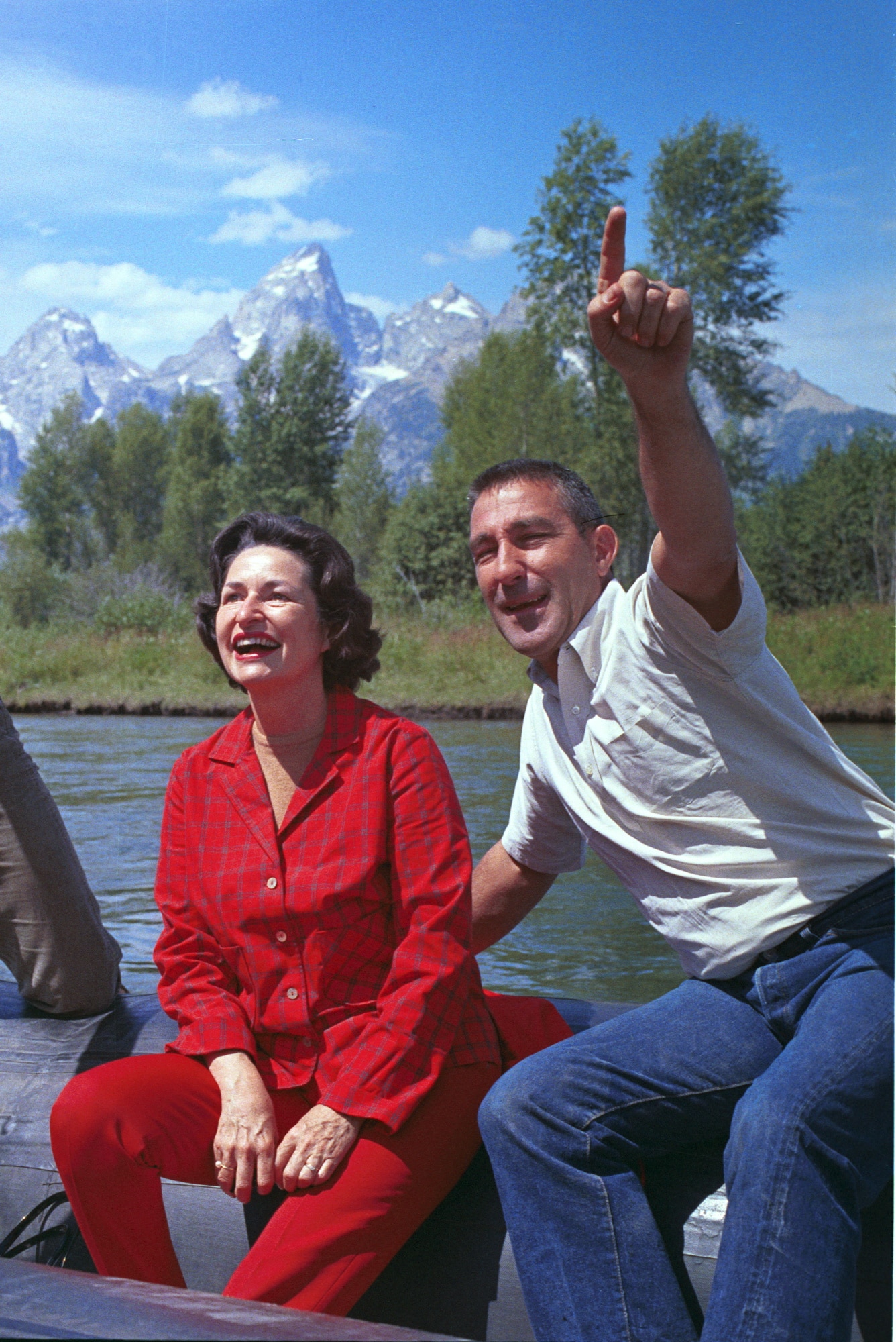
The First Lady’s Environmental Bill
Lady Bird’s efforts to beautify America would move her into the political arena.
The Highway Beautification Act of 1965 became known as “Lady Bird’s Bill.”
Other major legislative initiatives resulting from her efforts included: The Wilderness Act of 1964, The Land and Water Conservation Fund, The Wild and Scenic Rivers Program and many additions to the National Park system, a total of 200 laws relevant to the environment.
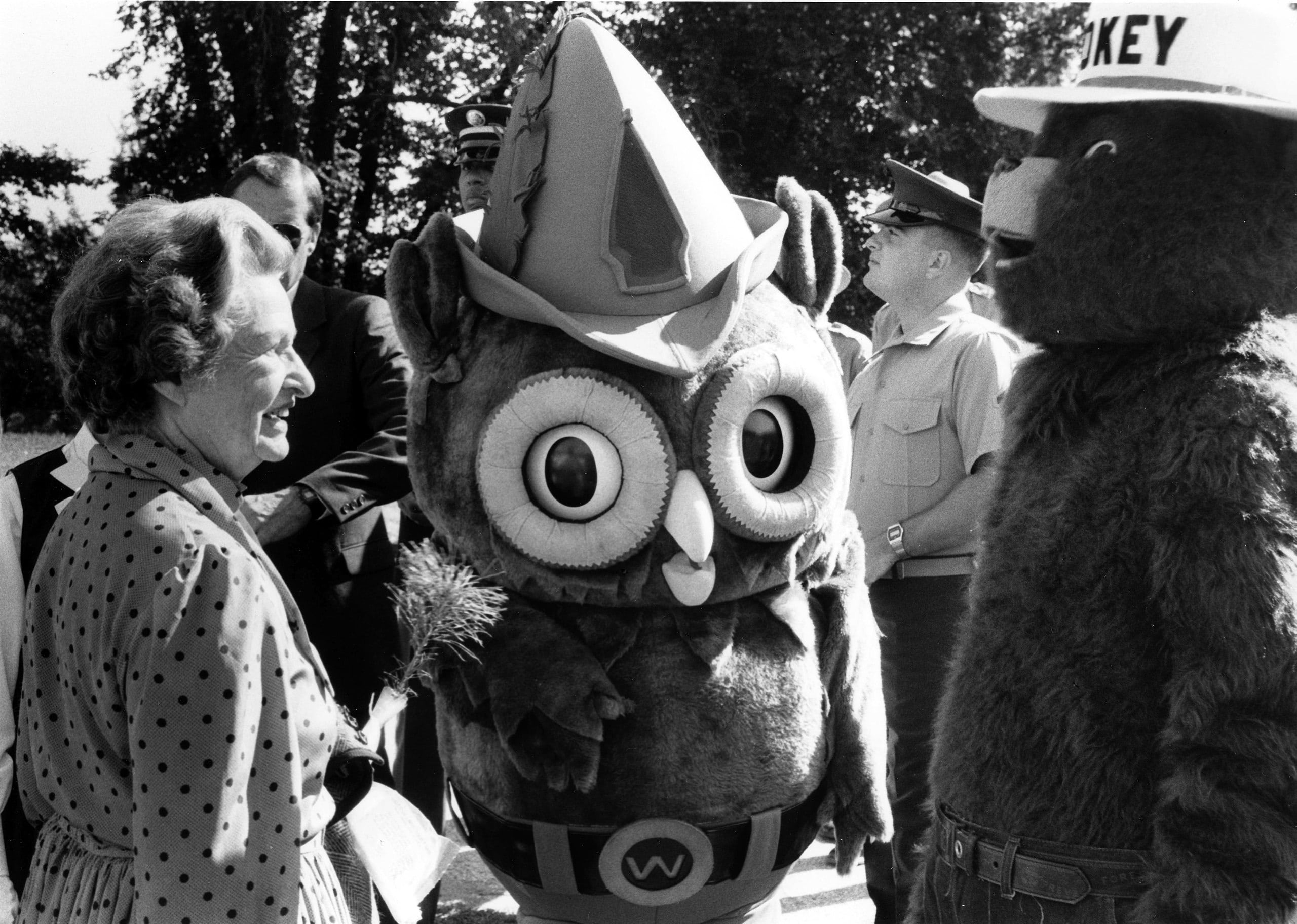
History & Dedication Lady Bird Johnson Grove
Lady Bird Johnson Grove was dedicated in August 1969 by President Richard Nixon honoring former First Lady, Lady Bird Johnson, in recognition of her work to preserve and protect America’s public lands.
Lady Bird attended the dedication along with her husband, former president Lyndon B. Johnson.
Notably, also in attendance were California Governor Ronald Reagan, Billy Graham, and First Lady Pat Nixon.
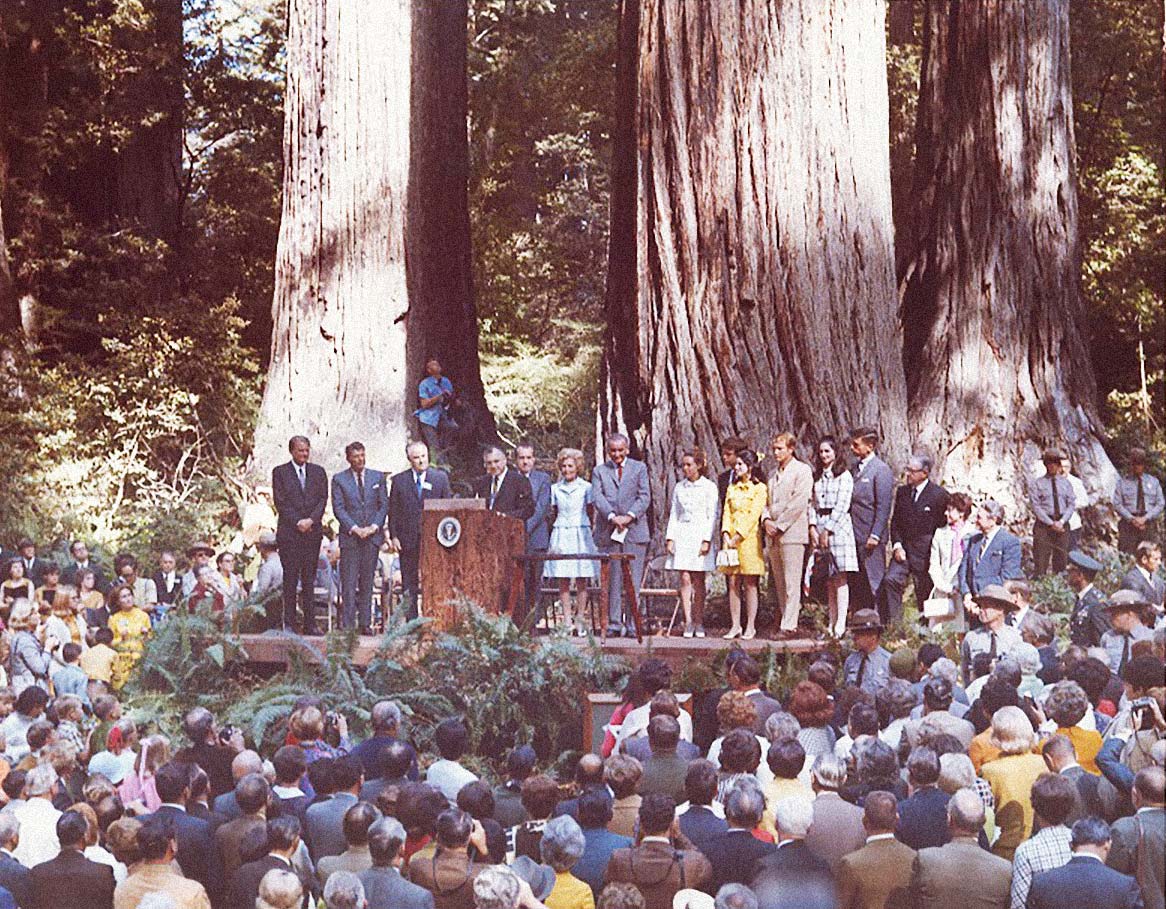
CHECK OUT: Is It Time For Another Bipartisan Era Of Environmental Activism
12. Three Blockbuster Movies Were Filmed In Redwood National Park Or Redwood State Parks
Our final Redwood National Park Fact is for those of you who are interested in learning about what role this amazing national park played in cinematic history.
As it turns out, three of the biggest Hollywood Blockbusters of all time had scenes filmed in Redwood National Park or one of the nearby redwood state parks.
Of course, the films I’m referring to are: Star Wars: Return of the Jedi, Jurassic Park: The Lost World and E.T.: The Extra-Terrestrial.
For Return of the Jedi, George Lucas looked closer to home for an alien landscape.
The Forest Moon of Endor was filmed on location in California’s Redwood National and State Parks, only 300 miles up the California coast from his Skywalker Ranch on Lake Ewok.
Jurassic Park, the 1993 science fiction film directed by Steven Spielberg, was based on the novel of the same name by Michael Crichton.
This motion picture used Red Rock Canyon State Park and locations in the North Coast Redwoods State Parks District among its many filming locations.
For E.T: The Extra-Terrestrial, the forest sequences were shot in the Redwood National Park. These major redwoods helped put into perspective just how small E.T. was and aided in creating a suspenseful setting for the opening sequence of the movie.
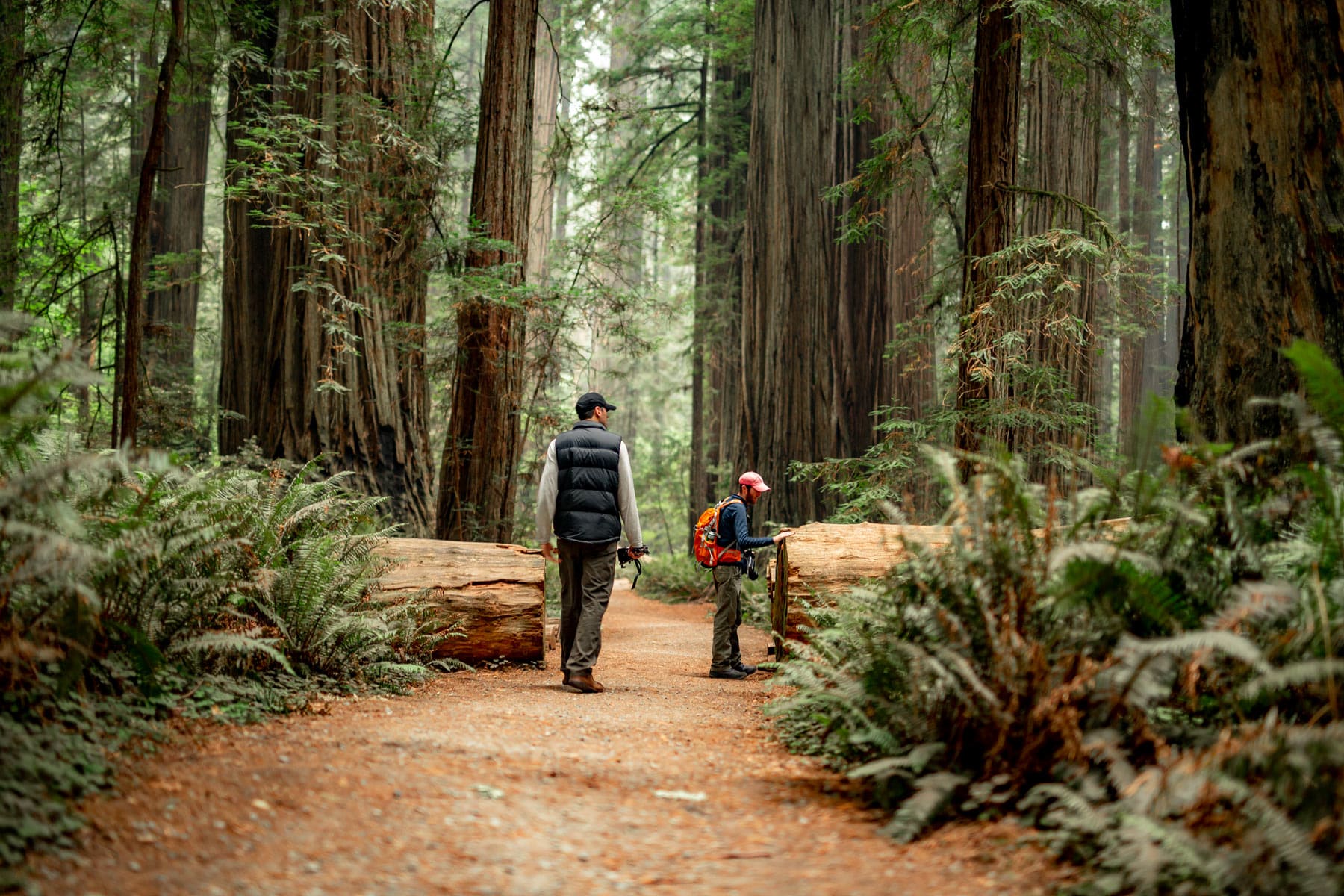
CHECK OUT: Look Familiar? 25+ CLASSIC Movies Filmed In The National Parks
Check Out Our Amazing Redwood National Park Film – It’s Less Than 4 Minutes
More Than Just Parks is the ONLY place you can go to find expert guides, beautiful photos, helpful tips, breathtaking films and so much more.
MTJP | Redwood is the culmination of several weeks spent exploring Redwood National and State Parks. Redwood National and State Parks in Northern California are home to the tallest trees in the world, the mighty Redwood, which can reach staggering heights of over 360ft and weigh more than 500 tons.
These parks feature magical forests, miles of spectacular beaches, stunning overlooks, and the largest herd of Roosevelt elk on the planet.
This film was shot entirely in 4K. Redwood National Park is a UNESCO World Heritage Site and for good reason.
A trip to this magical place is a must for every human on the planet. Redwood National Park features the tallest trees on the planet (not to be confused with the largest in Sequoia National Park).
If you’re planning a trip then check out: 15 STUNNING Things To Do In Redwood National Park
Why Trust Us About Redwood National Park?
We’re Jim Pattiz and Will Pattiz, collectively known as the Pattiz Brothers (and sometimes the Parks Brothers) and we absolutely LOVE the national parks.
You should probably know that we don’t just make this stuff up out of thin air. We’ve spent our entire adult lives exploring and filming America’s national parks and public lands.
We’ve worked with the National Park Service, the Department of Interior, USDA, and the U.S. Forest Service for years creating films on important places and issues. Our work has been featured in leading publications all over the world and even some people outside of our immediate family call us experts on the national parks.

Meet The Parks Brothers
Map Of Redwood National Park
List Of Redwood National Park Facts
- Indigenous Peoples Were The Earliest Inhabitants Of Redwood National Park
- A Cockroach May Have Been Responsible For The First Foreigner Seeing The Magnificent Redwoods
- Spanish Explorers Are The First Documented Foreigners To Visit The California Redwoods
- An American Frontiersman Was The First To Explore The Interior Portions Of Northern California
- Redwoods Possess Some Amazing Characteristics
- California Experienced A “Logging Boom” As Redwood Became The Wood Of Choice
- A League Was Established To Save The Redwoods
- The Tallest Redwood Tree Is Six Stories Taller Than The Statue Of Liberty
- Approximately 280 Birds Have Been Recorded Within The Boundaries Of Redwood & The Redwood State Parks
- From Redwood You Can See Some Of The Largest Mammals On The California Coast
- One Of The Most Spectacular Places To Visit Is The Lady Bird Johnson Grove
- Three Blockbuster Movies Were Filmed In Redwood National Park Or Redwood State Parks
We Hope You’ll Follow Our Journey

Our goal here at More Than Just Parks is to share the beauty of America’s national parks and public lands through stunning short films in an effort to get Americans and the world to see the true value in land conservation.
We hope you’ll follow our journey through the parks and help us to keep them the incredible places that they are. If you’re interested joining the adventure, sign up below!
Helpful Related Links
California: 20 BEST California National Parks Ranked
Los Angeles: 7 Epic National Parks Near Lost Angeles You’ll Love
Parks Near San Diego: 7 Amazing National Parks Near San Diego
San Francisco: 8 Best National Parks Near San Francisco
Parks Near San Jose: 7 Best National Parks Near San Jose
Redwood: Redwood National Park
Death Valley: Death Valley National Park
Pinnacles: 10 Epic Things To Do At Pinnacles National Park
Yosemite: 16 Yosemite National Park Facts Which Will Amaze You
Historic Sites: 15 Must-See Historic Sites In California

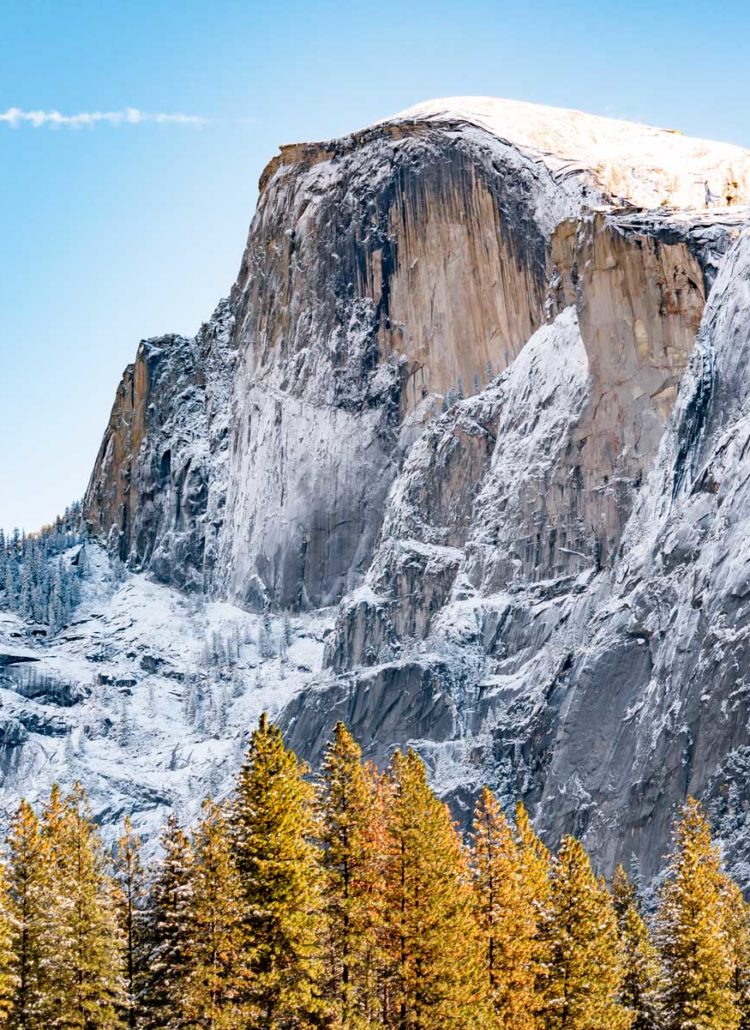

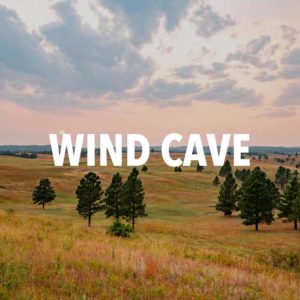

This was very helpful for my 6th grade history research paper
So glad to hear it Evangeline!!